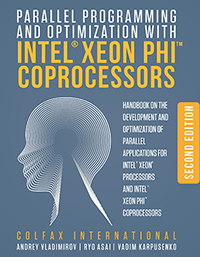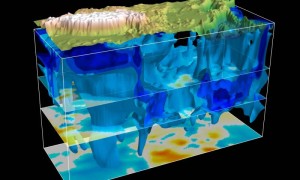 While we’re always on the lookout for HPC news, not everything makes it to the front page. Here are some notable items from this week.
While we’re always on the lookout for HPC news, not everything makes it to the front page. Here are some notable items from this week.
- Characterizing applications for manycore. Cray’s John Levesque writes that the days of using messaging across all the cores on a node are over. When porting/optimizing an application to the new generation of hybrid multi-/many-core systems, one must identify enough parallelization to utilize two levels of parallelism on the node. Whether the node is an accelerated node or a many-core node, a significant amount of threading on the node is a requirement for good performance.
- Climate Data Champions. Twelve researchers from the Lawrence Berkeley National Laboratory (Berkeley Lab) and UC Berkeley are among the recipients of the 2015 FLC Interagency Partnership Award. The team was honored for contributing a number of parallel analysis and visualization tools to UV-CDAT, a powerful toolset that aids climate researchers in solving their most complex data analysis and visualization challenges.
 Code Modernization. Colfax has just published the 2nd Edition of Parallel Programming and Optimization with Intel Xeon Phi Coprocessors. This book includes a detailed presentation of the programming paradigm for Intel Xeon product family, optimization guidelines, and hands-on exercises on systems equipped with the Intel Xeon Phi coprocessors, as well as instructions on using Intel software development tools and libraries included in Intel Parallel Studio XE.
Code Modernization. Colfax has just published the 2nd Edition of Parallel Programming and Optimization with Intel Xeon Phi Coprocessors. This book includes a detailed presentation of the programming paradigm for Intel Xeon product family, optimization guidelines, and hands-on exercises on systems equipped with the Intel Xeon Phi coprocessors, as well as instructions on using Intel software development tools and libraries included in Intel Parallel Studio XE.
 Digging to China. Researchers are using TACC supercomputers to discover hidden rock structures deep under East Asia. The researchers say their line of work could potentially help find hidden hydrocarbon resources, and more broadly it could help explore the Earth under East Asia and the rest of the world.
Digging to China. Researchers are using TACC supercomputers to discover hidden rock structures deep under East Asia. The researchers say their line of work could potentially help find hidden hydrocarbon resources, and more broadly it could help explore the Earth under East Asia and the rest of the world.
- DEEP software. Software will be the key to unlocking Exascale performance. In a recently posted interview, Norbert Eicker and Dr. Vicenç Beltran from the DEEP project describes their efforts to make DEEP hardware performance accessible to application developers.
- HP Apollo launches. HP has expanded their line of HPC platforms with the Apollo 2000 scale-out servers and density-optimized Big Data Server Storage with the Apollo 4000.
- Retooling XDMoD. The University of Buffalo Center for Computational Research has received a $9 million award to improve XD Metrics on Demand (XDMoD), a tool that monitors the performance of NSF’s supercomputers and the software programs that run on them.
- Rocks Rolls on with version 6.2. The latest update of Rocks (codename Sidewinder) has been released. Sidewinder is a 64-bit only release and is based upon CentOS 6.6.
- Too much precision? A new paper looks at the use of inexact, pruned hardware in atmospheric modeling. “Inexact hardware design, which advocates trading the accuracy of computations in exchange for significant savings in area, power and/or performance of computing hardware, has received increasing prominence in several error-tolerant application domains, particularly those involving perceptual or statistical end-users.”



